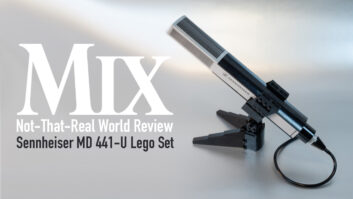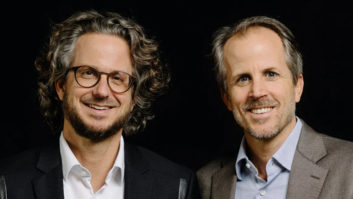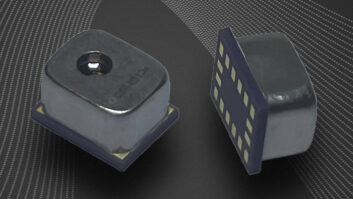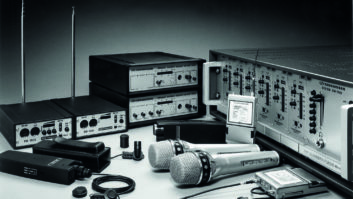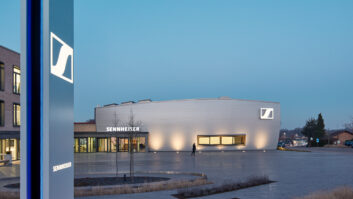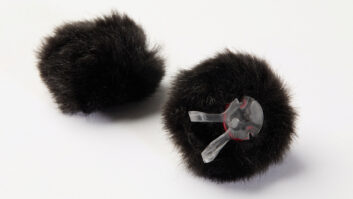Old Lyme, Conn., June 22, 2015 – Photo journalist Martin Edström and National Geographic have shared a truly extraordinary expedition for everyone to experience: they have explored one of the world’s biggest caves, the majestic and recently discovered Son Doong in Vietnam’s Phong Nha-Ke Bang national park. Martin and his team of six – assistant photographers, logistics, communications and lighting specialists – took breathtaking 360° photos of the almost untouched cave and recorded its sounds with Sennheiser stereo and shotgun microphones for a fully immersive online experience.
Son Doong, also called the “Infinite cave” because of its massive size, was discovered by a native of the area in 1991. However, as the entrance to the cave is as unobtrusive as it is steep, it took him until 2009 to actually relocate the cave in the jungle and explore it with a group of British scientists. The five kilometer long cave features huge chambers – some of them up to 180 metres high, stalagmites formed over millenia, a fast river flowing through the cave, phytokarst and lush, green vegetation at the points where the cave’s ceiling has collapsed.
Martin Edström first heard about the cave in 2014. Curiosity piqued, he started researching further and then heard news that the pristine caves were being considered for possible exploitation for tourism. Martin decided to capture the almost untouched beauty of the cave and preserve it in a 360° story and a photo archive for National Geographic. “I hope that our documentation of Son Doong will not only help tell the story about this cave, but also preserve a kind of digital copy of the cave – making sure we can visit it digitally whatever happens to it in the future,” says Martin.
An expedition team is set up
Martin moved fast: on securing National Geographic and a group of sponsors to support an expedition to Son Doong, he established a team of six and quickly started planning their trip. “Basically, we had just little more than two months to arrange for everything. The logistical effort was enormous. To give you an idea, we had about 300 to 400 kilogrammes of technical gear to take to Vietnam and drag around with us, cameras, lots of lighting, tripods, you name it. This is excluding tents and food and the like. We had fantastic help from an expedition team in Vietnam to arrange these everyday expedition logistics.”
Martin was joined by Erik Hinnerdal and Mats Kahlström, his two assistant photographers who would also capture sound, Fredrik Edström for communications, Alfred Runow for logistics and field assistants Katja Adolphson and Sebastian Zethraeus, who were tasked with meticulously lighting up the cave in 360° to allow the wonderful photos to be taken.
The microphones in the kit bag
The microphones selected by Martin and his team for the expedition were an SPM 8000 stereo microphone, an MKH 8060 short gun microphone and an MKH 8070 long gun microphone. All three of them are based on Sennheiser’s MKH 8000 series radio frequency condenser microphones, which feature a very natural sound with extremely low inherent self-noise and high resistance to unfavourable climatic conditions, such as moisture, dampness, cold and heat.
The team’s journey took them from Europe to Hanoi in January, and after some issues – not, as feared, with the 40 kgs of batteries, but in getting the indispensable tripods into Vietnam – they travelled about 500 kilometres south to reach the Phong Nha-Ke Bang National Park, nestled in between the Sea and the border to Laos.
The beauty of Son Doong recreated
Martin and his team spent two weeks in Vietnam and about a week inside Son Doong cave. Meanwhile, the original team had been expanded by guides and porters and counted about 50 people. Martin recalls, “We spent five very concentrated days in the cave photographing and recording. The biggest portion of this time was taken up by lighting the cave properly, as Son Doong is so enormously big. Sound-wise, there was always something to be heard: wind, water dripping, a river running, distant birds and sometimes also the thundering silence, if you know what I mean!”
“The SPM 8000 stereo microphone was always on recording duty, it was great for capturing the atmospheric audio. We used the MKH 8060 short shotgun microphone about 50% of the time, when we wanted to highlight a sound, for example the singing of birds, or some sounds of the river that flows through Son Doong.” The MKH 8060 was also the microphone of choice for recording the Vietnamese song that can be heard when the virtual expedition reaches the second doline. The short gun microphone is equally well suited to music recordings as it does not suffer from the colourations that can occur with other shotgun microphones. “The song is actually sung by one of the guides,” says Martin. “He has such a great singing voice! The song was written by a famous Vietnamese composer and is about unity in Vietnam. We thought this would make a great addition to the material. You can hear the song from afar when you get to the second sinkhole, it becomes louder when you continue through the jungle, and fades away when you enter the cave again.”
“The MKH 8070 was used for about 25% of the recordings to capture far-away sounds – which happened quite a few times in this gigantic cave! It was used to record water dripping, far-away birds, and also to raise some of these sounds above the rushing river.”
Martin sums up, “Sound is as important as the images because it really transports you to the place. Listening to the sound gives the website visitors exactly the same feeling as we had in the cave. 360° panoramic views combined with the fantastic soundscape perfectly recreate the atmosphere that we experienced in Son Doong.”
The Sennheiser Group based in Wedemark near Hanover, Germany, was founded in 1945 and has gone on to become a leading manufacturer of microphones, headphones and wireless transmission systems. Sales in 2013 totaled 590.4 million euros. Sennheiser employs more than 2,500 staff worldwide and operates plants in Germany, Ireland and the USA. The company has a worldwide network of subsidiaries in France, Great Britain, Belgium, the Netherlands, Switzerland and Liechtenstein, Germany, Denmark (Nordic), Russia, Hongkong, India, Singapore, Japan, China, Australia and New Zealand, Canada, Mexico, and the USA. It also has long-established trading partners in other countries. Georg Neumann GmbH, Berlin, a maker of studio microphones and monitor speakers, and Sennheiser Communications A/S, a joint venture making headsets for PCs, offices and call centers, are also part of the Sennheiser Group.
More up-to-date information about Sennheiser is available on the internet at www.sennheiser.com

